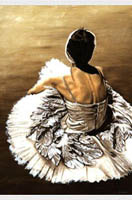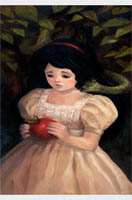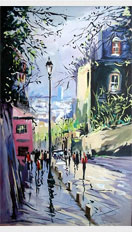Oil painting -> List of Painters -> Sonia Delaunay
Sonia Delaunay
 |
Early Days: Sarah Ilinitchna Stern (Sonia Delaunay) was born in Gradizhske (now in Poltava Oblast) in the Ukraine. At a young age she moved to St. Petersburg, where she was cared for by her mother's brother, Henri Terk. Henri, a successful and affluent Jewish lawyer, and his wife Anna wanted to adopt her but her mother would not allow it. Finally in 1890 she was adopted by the Terkse. She assumed the name Sonia Terk and received a privileged upbringing with the Terks; they spent their summers in Finland and traveled widely in Europe introducing Sonia to art museums and galleries. |
Career:
When she was 16 she attended a well-regarded secondary school in St. Petersburg, where her skill at drawing was noted by her teacher. When she was 18, at her teacher's suggestion, she was sent to art school in Germany where she attended the Academy of Fine Arts in Karlsruhe. She studied in Germany until 1905 when she decided to move on to Paris. She apparently made the decision to move to Paris after reading Julius Meier-Graefe's book Manet und sein Kreis which claimed that Paris was the center of true art.
In 1911 Sonia made a patchwork quilt for Charles' crib, which is now in the collection of the Musee National d'Art Moderne in Paris. This quilt was created spontaneously and uses geometry and color.
Contemporary art critics recognize this as the point where she moved away from perspective and naturalism in her art. Around the same time, cubist works were being shown in Paris and Robert had been studying the color theories of Michel Eugene Chevreul, they called their experiments with color in art and designsimultaneisme.
|
Simultaneous design occurs when one design, when placed next to another, affects both; this is similar to the theory of colors (Pointillism, as used by e.g., Georges Seurat) in which primary color dots placed next to each other are "mixed" by the eye and affect each other. Sonia's first large scale painting in this style was Bal Bullier (1912-13), a painting known for both its use of color and movement.








